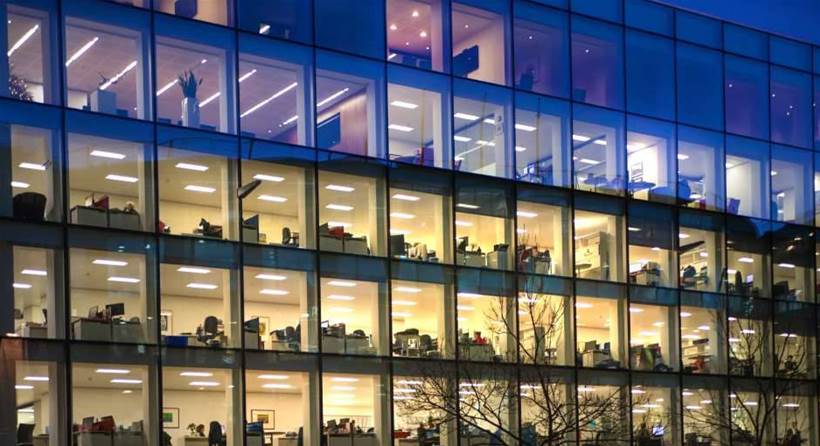Lighting is a significant part of a building’s infrastructure. The growth of smart building technology means controlling lighting and energy efficiency is easier. Smart lighting systems offer dedicated controls for lights in buildings that enable daylight harvesting (turning lights adjacent to windows when there is enough light outside), dimming control, etc. These are just some of the ways you can manage lighting in buildings, but lighting systems are not confined to these few roles.
1. Asset Tracking
In large buildings such as hospitals, it is easy for medical staff to spend hours trying to find medical equipment. Using Bluetooth transceivers fitted into lighting controls enables tracking of assets, allowing the staff to be directed to the nearest equipment.
2. COVID-19 Tracking
In the current COVID-19 pandemic, a smart building lighting system helps people get into and out of building with zero contact. This happens by analyzing movement patterns and showing frequent congestion areas. It can also be used for anonymous contact tracing. The system tracks down all the people in contact with an infected person within the building. The system alerts them of the risk, and to ask them to get tested.
3. Building Maintenance
Tracking building occupancy rates and saving money spent on cleaning services is easier. Rather than clean a specific area at a given time, your lights can relay data to inform the cleaning staff which areas need cleaning. This includes restrooms, and the system can send an alert to clean restrooms after several uses, rather than following a fixed schedule.
The building’s smart system allows the building’s operators to collect data and fix any repairs early. The system alerts them of anything that is not working, and the early repair costs less than if the repair was left for far too long. This means there are fewer costs of annual repairs and maintenance costs.
4. The comfort of Building Occupants
The control of the building’s environment to make it more comfortable for the occupants is becoming more prioritized. The occupant comfort includes air quality, humidity level, natural light, and safety, especially during the COVID pandemic.
Lighting controls that detect light levels and temperatures can help in creating a comfortable space. As mentioned before, the lighting controls can be used to help people keep a social distance. Comfortable occupants subsequently mean happier people and improved productivity of employees at work.
5. Energy Saving
Smart buildings save a significant amount of money on reduced power bills. Motion sensor lights switch off lights in corridors and rooms until they sense movement. This comes in handy in a building with many people and becomes easier to monitor energy usage. Air conditioning in smart buildings can be set to operate depending on the building’s occupancy rate.
When it is colder outside, the temperature goes up, depending on a room’s occupancy rate, and turns off any systems like an A/C left on at night or over the weekend by the tenants. These setups automatically save energy, and in turn, thousands of dollars.
6. Value Addition
Smart buildings are worth a lot more than their unconnected counterparts. They save a lot of money in energy and maintenance bills but also run more efficiently, which improves sustainability by reducing utility bills. Smart buildings also bring the owners more income as their tenancy rates is higher, and the buildings’ resale value high. A smart building is always in high demand, which means the rent is higher, which also means the building’s occupancy level is always at 100%.
Conclusion
Smart systems optimize your building’s performance, which reduces maintenance costs, energy consumption. Smart systems also increase the asset value, the occupants’ well-being, and their productivity. By using smart systems, the building’s resale value goes up, and consequently, a higher tenancy rate, with higher rent charges.
Making your building smart may be a costly investment, but one that gives you a quick ROI (Return on Investment), considering the maintenance and energy costs will be less and the occupancy level always high.
